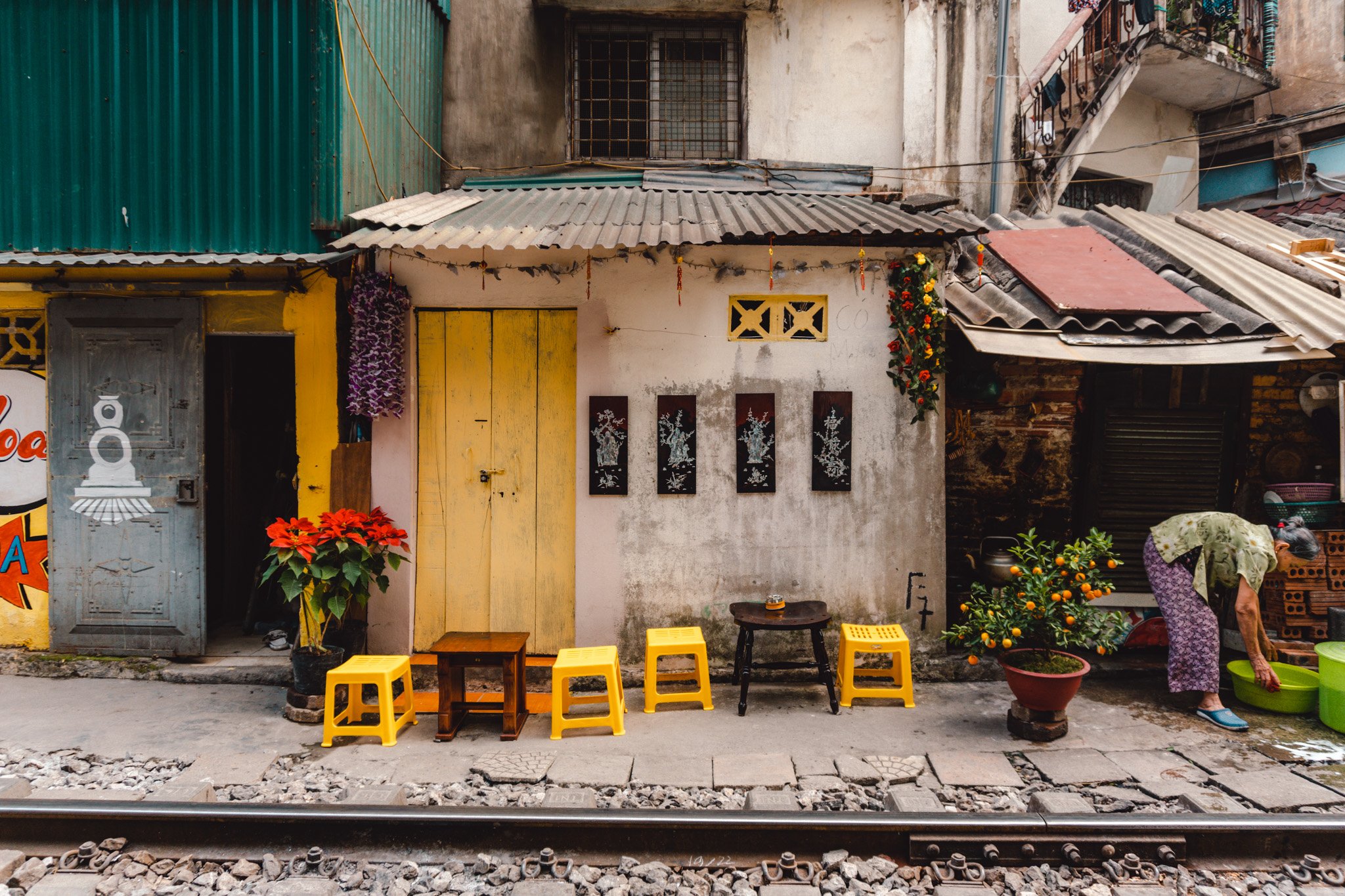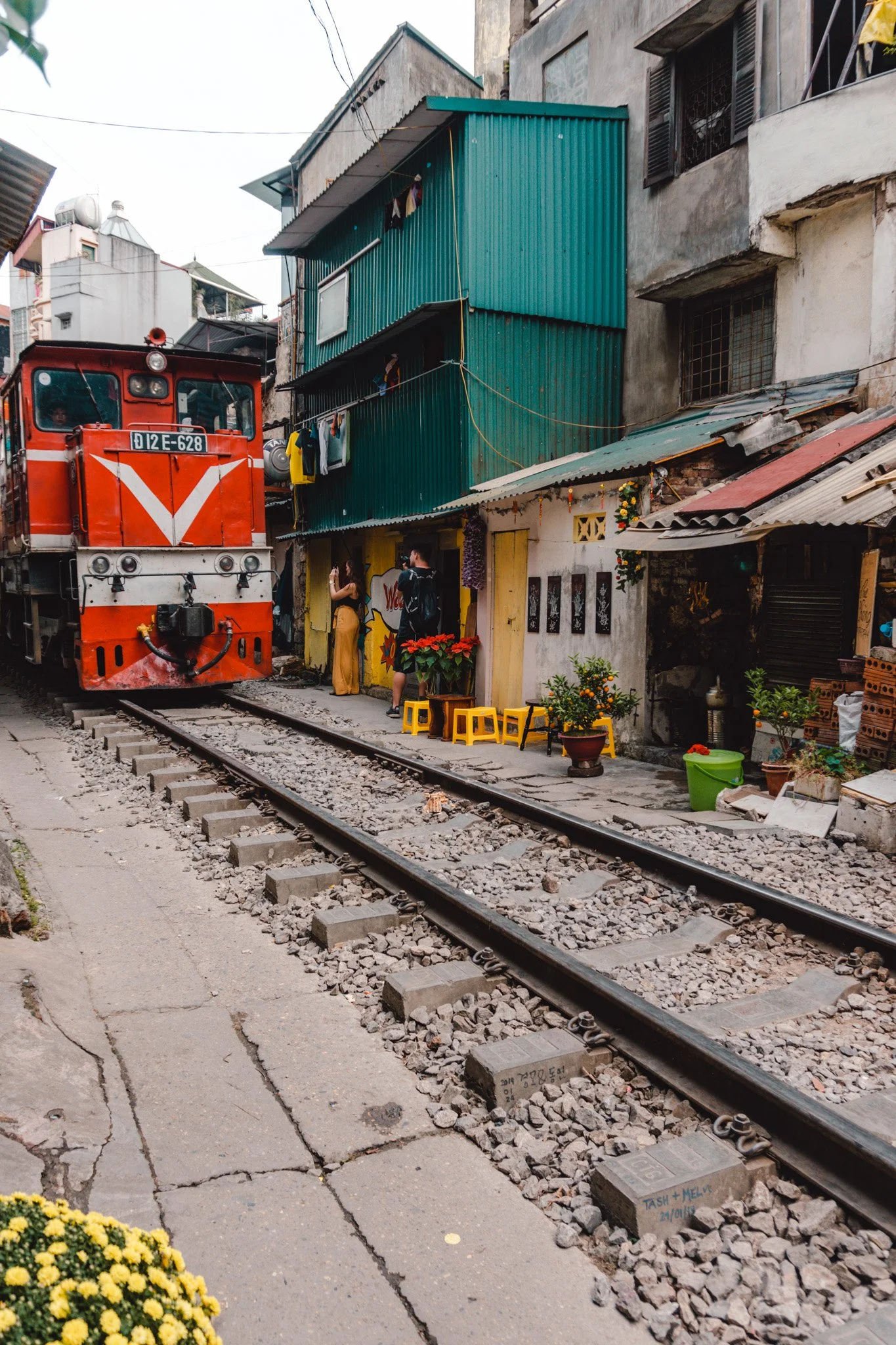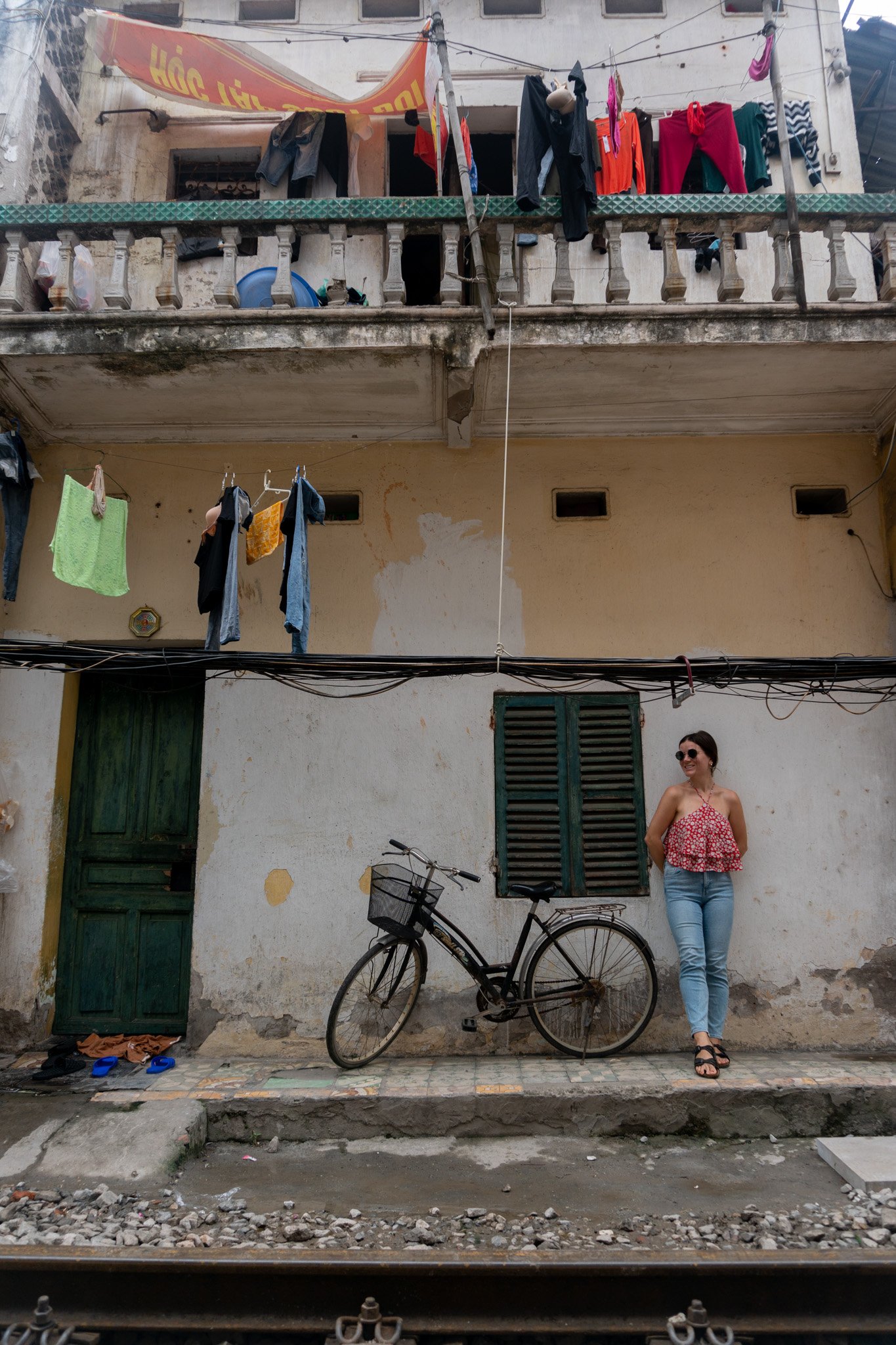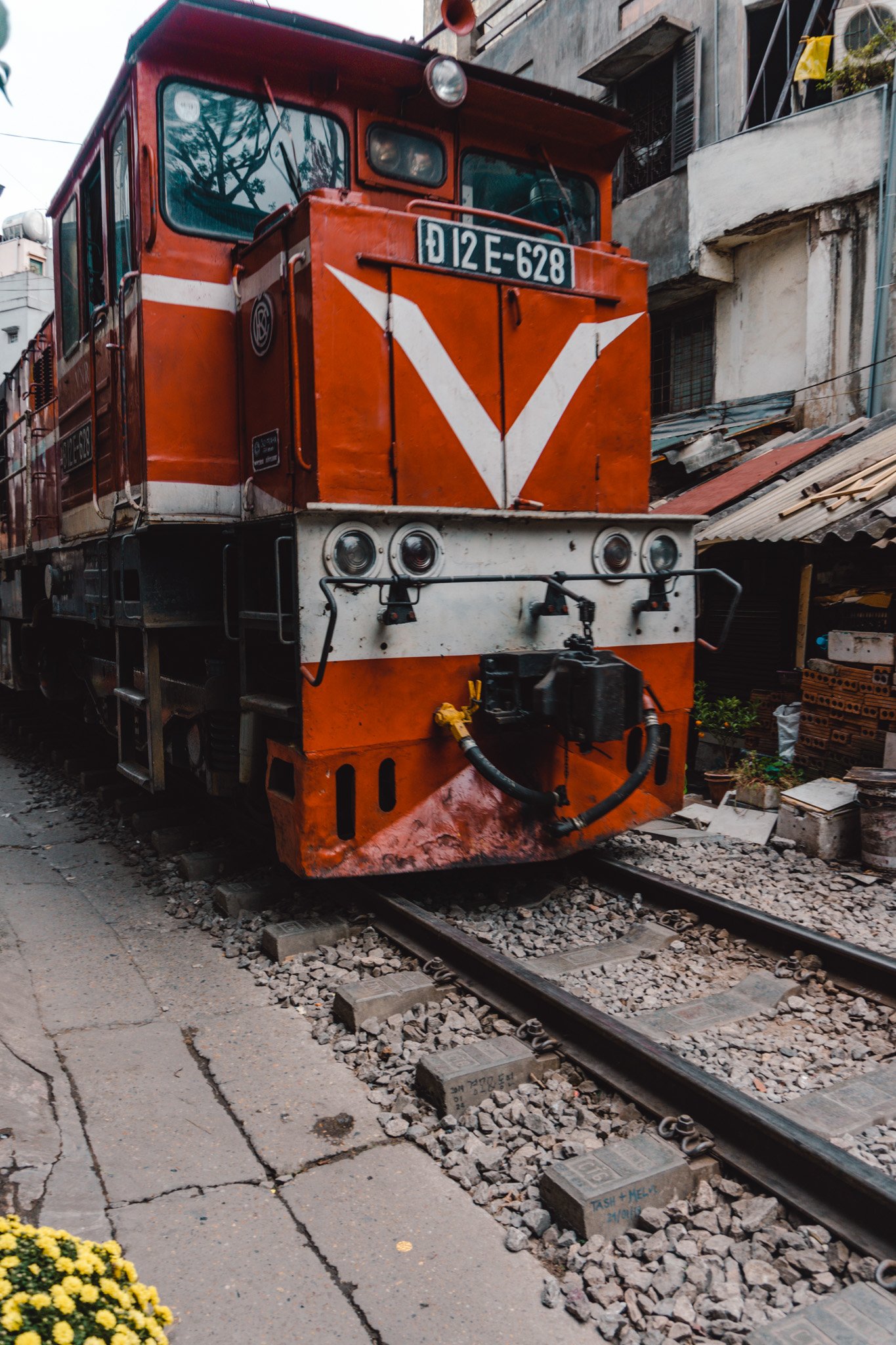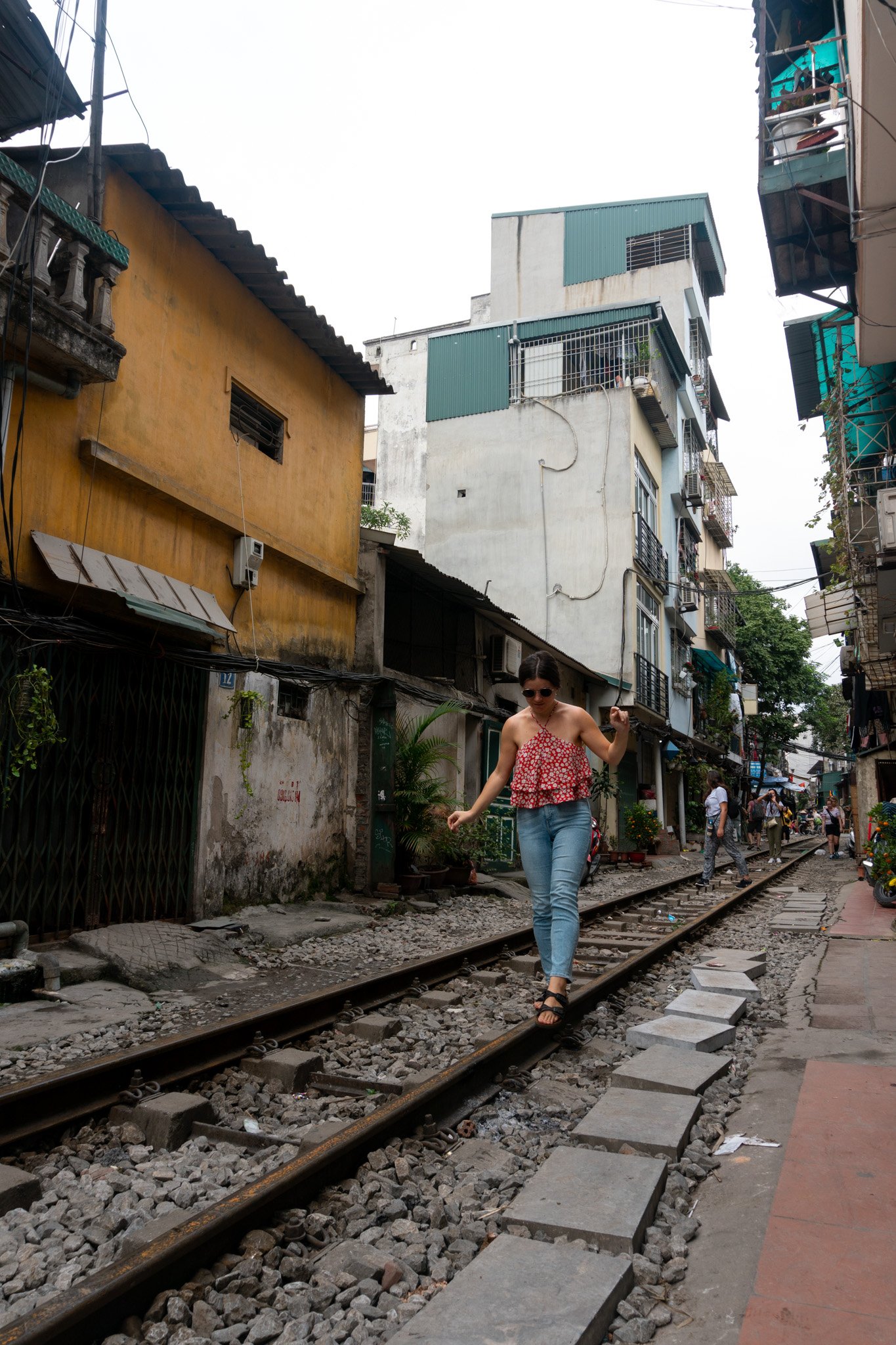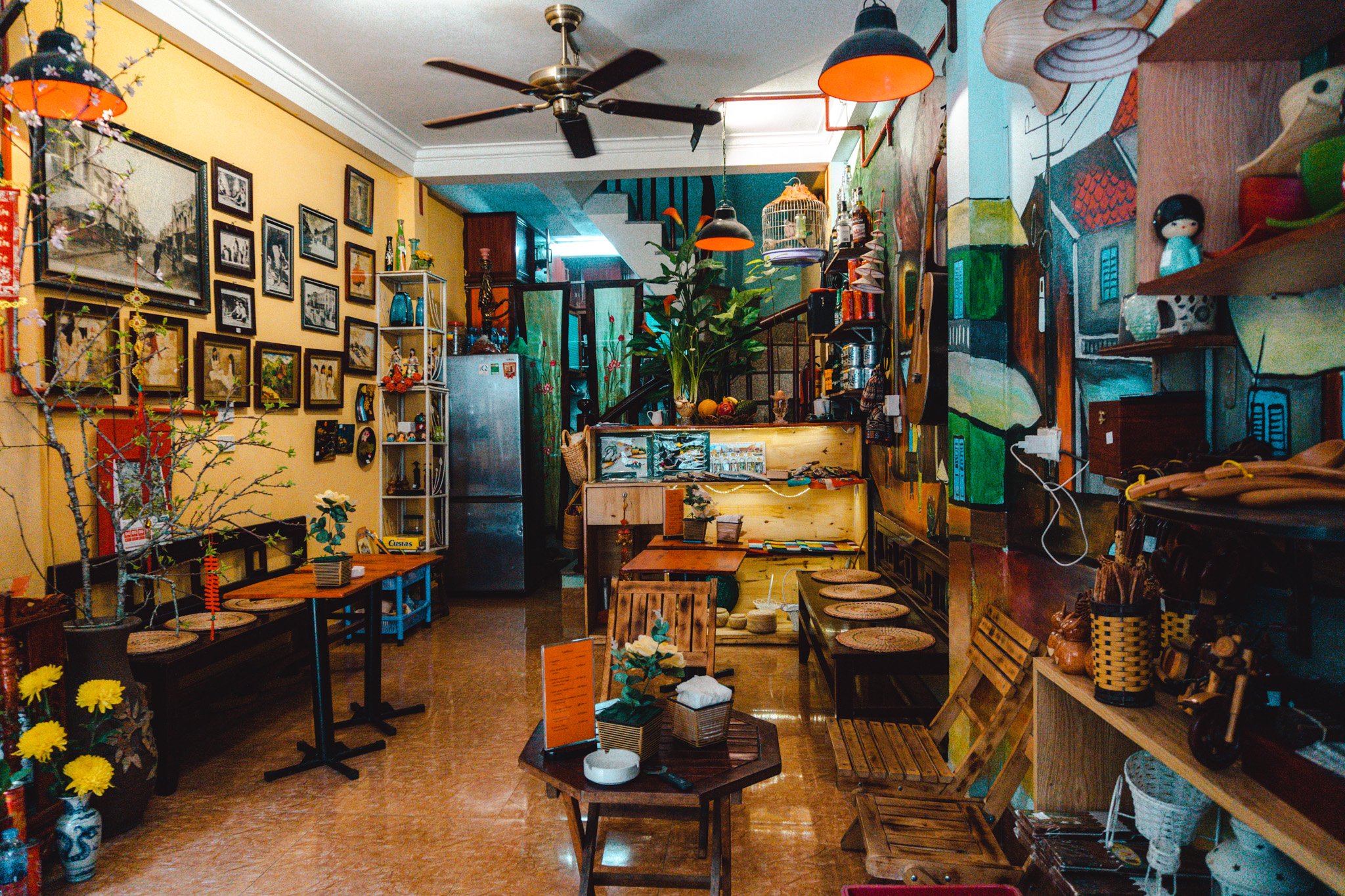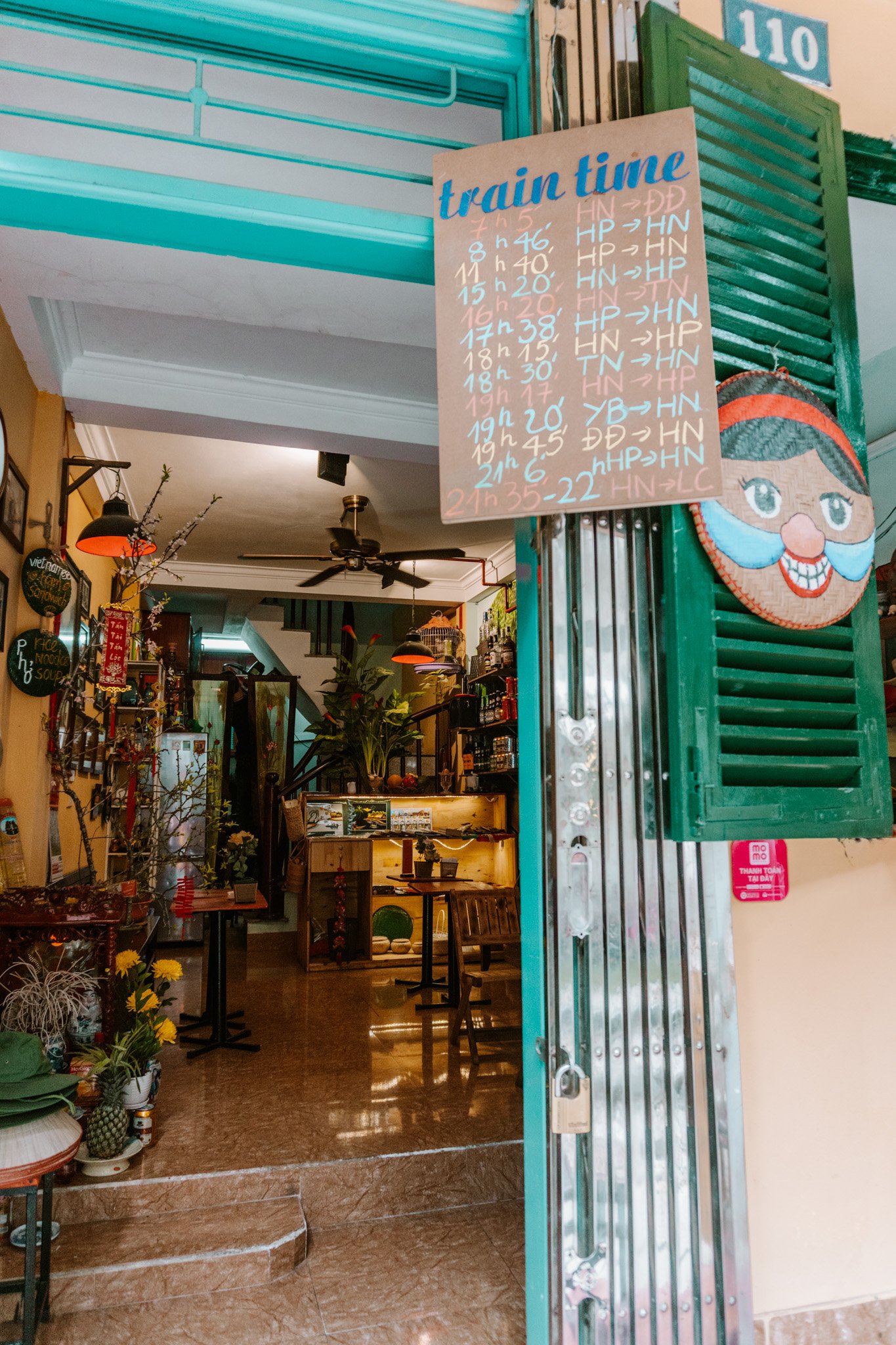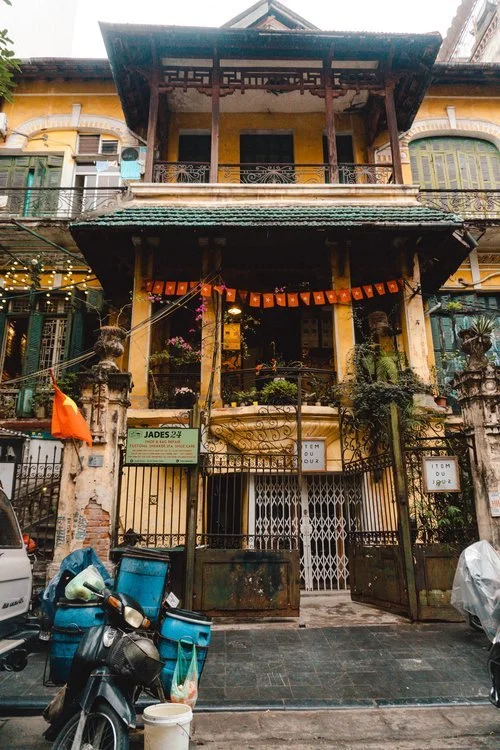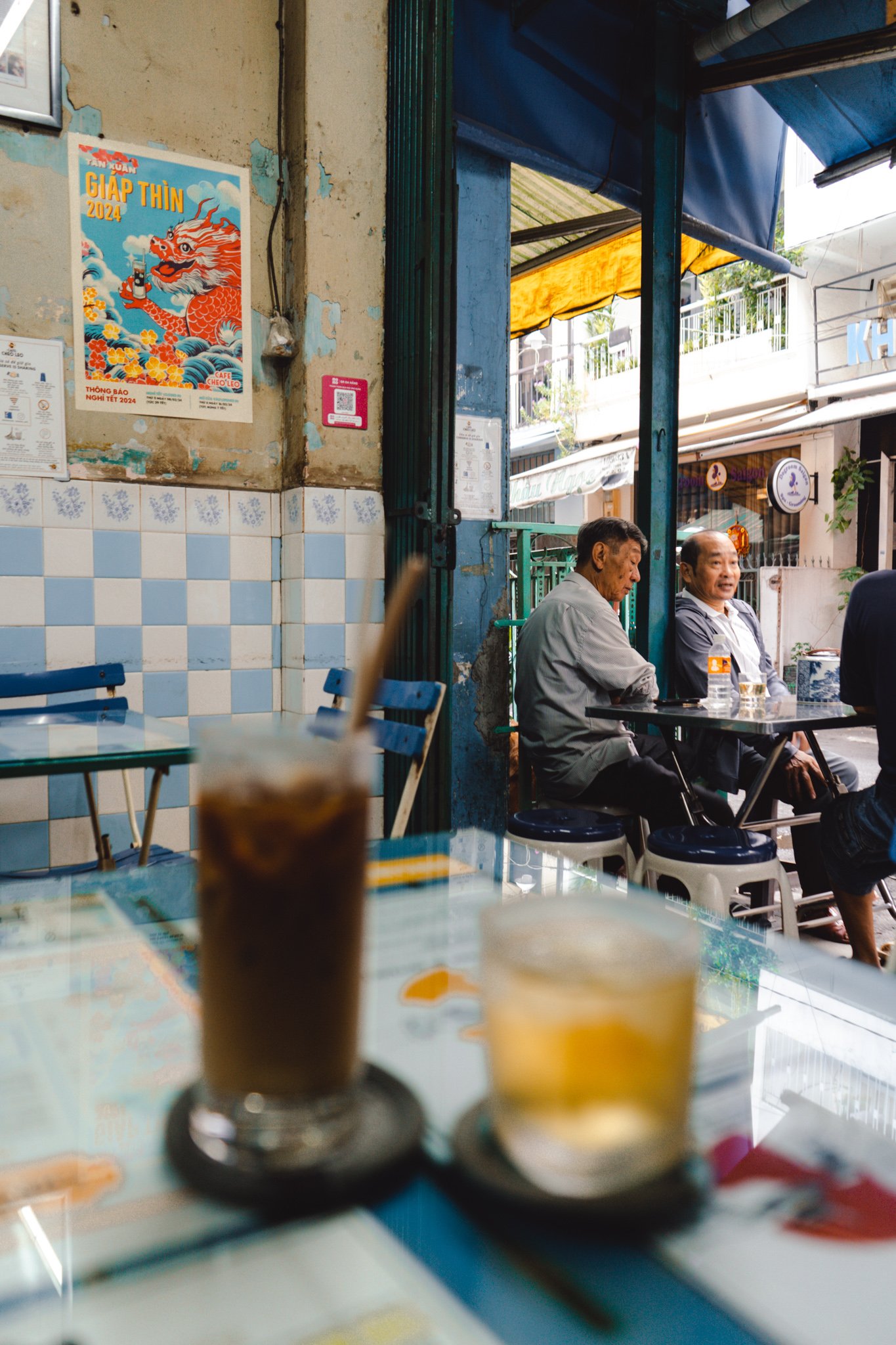Hanoi Train Street: Train Schedule + A Guide to Visiting (2025)
This post serves as a complete visitor’s guide to Hanoi’s famous Train Street, including getting there, train times, where to stay, and safety tips.
In the midst of the chaotic streets of Old Quarter is a truly one-of-a-kind railroad. High-speed locomotives come barreling through the residential area known as “Train Street’ to Hanoi tourists and Trân Phù to the city’s locals.
You’ve probably seen Train Street slathered across your Instagram feed. What makes it so photo-worthy is that it operates like most other streets in the Vietnamese capital, with the difference being a massive, fast-moving train’s tracks in sitting in place of a paved road. It’s lined with tall, narrow buildings, dilapidated and decaying. Women hang laundry lines dangling three floors up. Children run amuck. Residents kill time by sitting on low plastic stools, sipping strong coffee poured over condensed milk.
During this visit to Train Street, I arrived with fifteen minutes between me and the train’s incoming. Rather than rushing to grab a picture like a brave fool, I hunkered down at a café along the railroad and grabbed a watermelon juice. I watched all the locals push their stools closer to the walls and move their laundry basins from off the tracks. After the train passed, I went on to take my photos.
where is Train Street in Hanoi ↴
When I first visited Hanoi, I was worried Train Street would be really hard to find. However, I was surprised when I found out Train Street is quite long, making it easy to find. A lot of travel blogs I read before visiting made it sound hidden from the city, but it’s hard to miss— it’s a railroad after all. There are two sections of Hanoi Train Street: the Old Quarter section and the Lê Duẩn section.
The Old Quarter section is sprinkled with cafés, local shops, and homestays. You can easily walk to this section of Train Street from the Old Quarter and Hoan Kiem Lake areas, but it will take you roughly 10-20 minutes depending on where you start. Alternatively, you can get a Grab taxi for very little money. To get here, simply type in “Hanoi Train Street” into Google Maps.
The Lê Duẩn section is a little further out of town and has only a single café along its part of the track. To get here, put Ngo 224 Lê Duẩn into Google Maps. When I visited, the Lê Duẩn section, it was much quieter, and, while there were definitely other tourists there, it wasn’t as busy as the Old Quarter section.
where to watch the train ↴
The best way to watch the train as it rattles its way through the narrow residential street is from one of the many cafés along the track. Owners typically move the stools closer to the wall or tell you to do so when the train is on its way.
The most popular part of Train Street is the Old Quarter section, which makes sense given this section of the street has more cafés and shops to choose from. Both sections have plenty of atmosphere!
Hanoi Train Street schedule ↴
The two sections of Train Street, Lê Duẩn and the Old Quarter, have different train timings.
TRAIN TIMES through the Old Quarter section:
Monday-Friday: 7 PM, 7:45 PM, 8:45 PM, + 9:30 PM
Saturday and Sunday: 8:30 AM, 9:30AM 11:30 AM, 3:20 PM, 5:30 PM, 7:20 PM, 8:45 PM, 9 PM, + 11 PM
Train Times through Lê DuẩN section:
daily at 3:30 PM + 7:30 PM
Note: The train schedule regularly changes, so check the signs at the local windows and cafés along Train Street when you arrive in Hanoi.
Multiple trains run across the tracks every day. These train timings are posted on signs in the windows of cafés along Train Street, and while I think they’re estimations rather than exact timings, they’re relatively accurate in my experience. There’s no need to memorize this timetable— you’ll know the train is coming thanks to alarm bells ringing and café owners hurriedly moving plastic chairs away from the train tracks.
The best time to take photos without crowds is earlier, much like anywhere else. Most people catch the 3:20 PM train traveling through the Old Quarter train on the weekends, so café seating by the tracks might be more limited around that time. The trains typically come from the South.
The road closes a few minutes before the train comes, so make sure you get to a safe spot at a train-track café with enough time.
is Train Street dangerous? ↴
It’s sad that I even feel like it’s necessary to put a disclaimer on this post, but here it is: no photo is worth your life! The trains that hurl themselves down the tracks are massive and there is no stopping them— they will not stop for you (because they actually cannot stop for you). Get your desired photos well before one of the trains makes an appearance. When it’s nearing time for the trains to roll on in, find a spot on the side of the track at one of the many cafés that line the sides of the rails.
where to stay in Hanoi ↴
Looking for the perfect place to stay while in Hanoi? You’ll have plenty of options, no matter what your preferences may be.
In terms of which neighborhood is best in Hanoi, again there are several options. For first-timers, I recommend the Old Quarter, sometimes also referred to as Hoan Kiem. This is the perfect area if you are new to Hanoi and are hoping to figure out.
Best neighborhoods in Hanoi:
The Old Quarter/Hoan Kiem | Staying in the Old Quarter puts you in the heart of the city, making it easy to walk to many of the main attractions. Here, you’ll find plenty of affordable accommodation, though be warned that noise pollution in Vietnam is a real thing. Bring earplugs and/or check reviews to see if there are any mention of noise conditions.
The French Quarter | The French Quarter is very central with the added bonus of being a bit less noisy than the Old Quarter. This area has many boutique stays and international chain hotels, making it especially popular with luxury travelers.
Tay Ho/West Lake | West Lake is a hub for remote workers and Western immigrants. It’s filled with fine dining options, apartments for rent, and boutique shopping. This area is a great option for long-term visitors.
best luxury hotels in Hanoi:
The Oriental Jade Hotel | A luxurious boutique hotel in the heart of Hanoi's Old Quarter, offering elegant rooms, personalized service, and a rooftop bar with stunning city views.
Sofitel Legend Metropole Hanoi | A historic landmark hotel known for its French colonial architecture, opulent interiors, and world-class amenities including multiple restaurants, a spa, and a pool.
InterContinental Hanoi Westlake | Situated on the picturesque Westlake, this 5-star hotel features spacious rooms, lake-facing balconies, a range of dining options, and a tranquil spa.
Hotel de l'Opera Hanoi | A boutique hotel with a unique theatrical theme, showcasing elegant rooms, a French-inspired restaurant, a rooftop bar, and a convenient location near the Opera House.
Apricot Hotel | A boutique hotel that combines art and luxury, featuring well-appointed rooms, an outdoor pool with panoramic city views, a spa, and an art gallery displaying Vietnamese artwork.
Hanoi La Siesta Diamond Hotel & Spa | A charming hotel known for its exceptional service, comfortable rooms, and a spa offering traditional Vietnamese treatments. Located in the Old Quarter.
Mövenpick Hotel Hanoi | A contemporary hotel with modern rooms, a rooftop bar, a fitness center, and an outdoor pool. Located in the business district, near the My Dinh National Stadium.
Pan Pacific Hanoi | A luxurious hotel featuring well-appointed rooms, multiple dining options, a rooftop bar, a spa, and a panoramic view of the Westlake. It is conveniently located near popular attractions.
budget accommodation in Hanoi:
Nexy Hostel | A clean, airy hostel in the heart of Old Quarter. Rooms start at ~ USD $12 per night.
Mad Monkey Hanoi | Mad Monkey is a chain of eco-minded hostels, and its Hanoi location is fantastic value for money. Rooms start at ~ USD $12 per night.
We love using Booking.com to book the best places to stay around the world.

